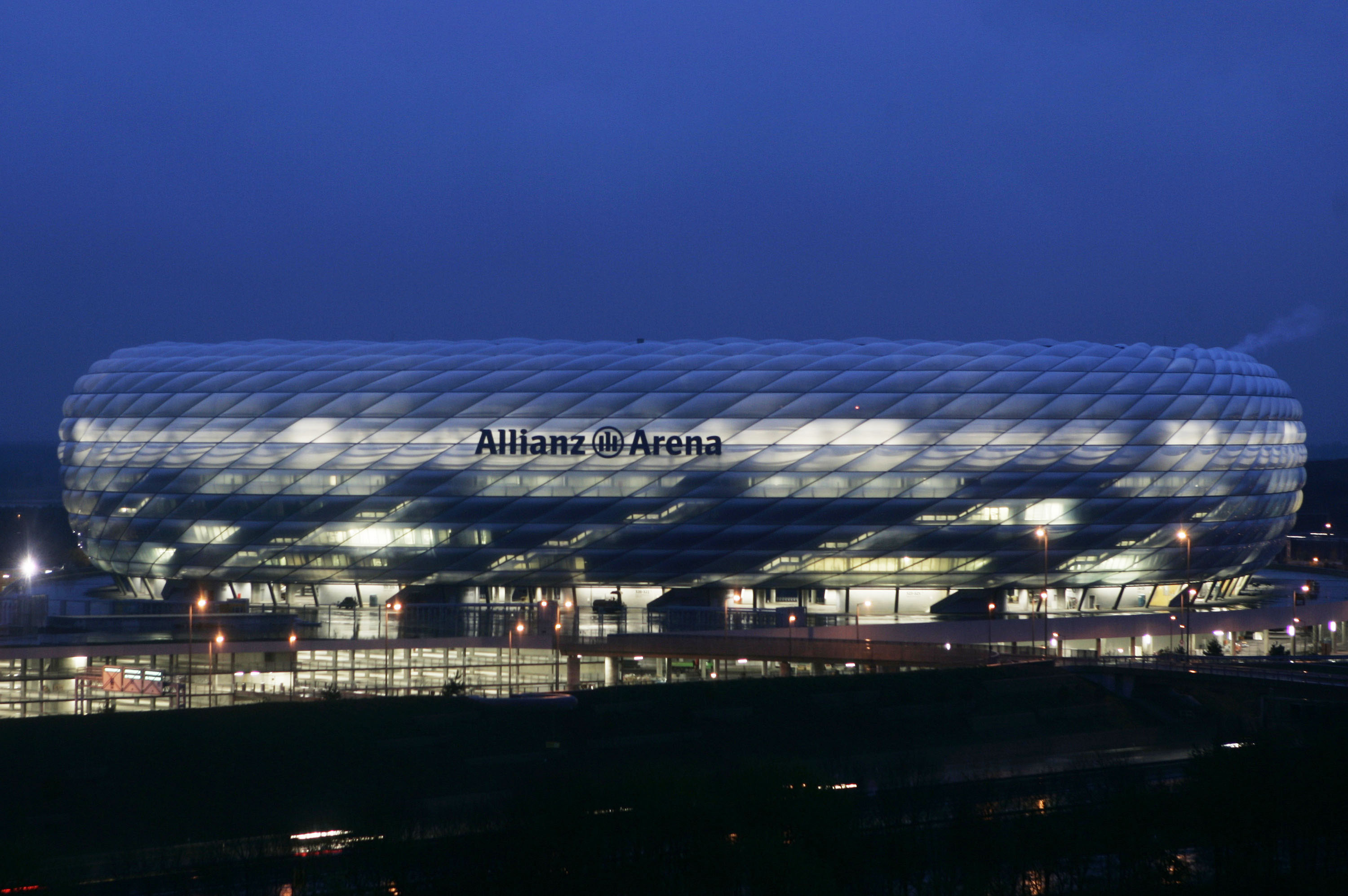Are football stadiums a good source of revenue or an unnecessary cost?

© Gettyimages
With thousands of screaming fans donning their team’s colours, team banner, and flags, a stadium on a match day becomes home to people who share their heart with a team to show support. From the roaring atmosphere at a colosseum to the singing and chanting fans at Signal Iduna Park, stadiums have always been an important part of any sporting event or organisation. Not only do they serve as a platform for the team that puts on a display at the arena, but also a major source of revenue for the respective establishments. But many do not realise that building and maintaining a stadium is not as easy as one thinks.
How Stadiums earn revenue?
For ages, stadiums were one of the largest sources of revenues for a team, if not the only. Over the years the growth of television and sale of Merchandise have grown significantly, displacing the stadium’s earning capability. However, this does not amend the fact that stadiums are necessary and that there is a huge cost involved in building and running a stadium.
Stadiums nevertheless have also evolved to earn more than just ticketing revenues, although this is where the largest chunk of money comes from. With the evolution of ticketing and hospitality, stadiums have raked up newer and larger sources of revenues over the years. However, major sources of revenues for a stadium could include the following:
1.Match Day, Season Passes & Corporate Boxes – Gone are days when one would pay a small fee and stand on a concrete platform to watch their favourite team play. With ticket prices rising faster than a thermometer in a sick man’s mouth, clubs such as Arsenal and Paris St-Germain demand as much as € 100 for a single game. However, this match day ticket sales only make up for a part of the ticketing revenue. The majority of the money a club make is through the sale of season tickets and VIP as well as corporate boxes. Season tickets costing close to € 700 are quite common in the Premier League and they also make up large sums of money. VIP boxes and corporate boxes earn tonnes of money on matchday with the promise of networking events as well as business deals that might be accomplished before or after the game, while the game itself is just an event or an excuse to gather at a common meeting point. The clubs earn as much as 70,000-80,000 Euros per season for ten seats in a corporate box
2.Hospitality Services – A large chunk of the revenue earned on a match day also include the sale of food and beverages at the venue. Although European stadiums are quite far off from the American counterparts that offer anything from a pint of cold beer to a lobster meal, sale of food and beverage makes up for quite a sizeable portion of the revenues earned in a stadium. The German club Schalke 04’s Veltins-Arena reported that some of their games sell close to 50,000 litres of beer on a single match day, courtesy of the vast 5km long beer pipelines that run under the stadium.
3.Other Events - A majority of the stadiums nowadays have transformed from a sole football oriented venue to a multipurpose facility. With large music concerts, other sporting events such as ice hockey, basketball, and monster truck shows just to name a few. Tottenham Hotspur which is currently building its new stadium has a 10-year agreement with NFL to play at least two games a season at their stadium, which is sure to bring in a lot of revenue for the club.
Costs involved in a stadium

 The Emirates Stadium, Arsenal FC © Gettyimages
The Emirates Stadium, Arsenal FC © GettyimagesStadiums are an expensive affair, most teams that build and own a new stadium go through extensive periods of cash crunches and debt repayments during which their performances may be affected drastically. Take
Apart from the construction costs, teams are also required to spend regularly on updating and maintaining the stadium seats and venue, the pitch and additionally adding new technology and upgrading the venue with the necessary safety features. Liverpool’s Anfield has been an excellent venue for years, but with the growing need for a bigger stadium to accommodate their ever increasing fan base, it was high time the Red’s made a few changes. However, rather than building a new stadium, they have opted to alter their home with a phase by phase modification of their stands. This was a very cost efficient option as the team neither had to move nor have to go through a large outlay of cash as is involved in the construction of a new stadium.

 Anfield, Liverpool FC © Gettyimages
Anfield, Liverpool FC © GettyimagesStadiums on Rent
One way to avoid high capital costs is to rent stadiums, as is the practice amongst most Italian clubs. Apart from Juventus, Sassuolo, and Udinese, all clubs in the Italian Serie
From the point of view of the team, a rented stadium is advantageous for them, as they only have to set out a rental expense every year towards the use of the stadium. Any other decisions and expenses that need be incurred have to be borne by the owners of the asset. This, however, has an adverse effect on the clubs. They do not have a supplementary source of income from the stadium on non-match days and for fans of teams sharing the same stadium, they do not feel the same attachment to the stadium as much as they would have had their club owned the property. This is one of the reasons why the Italian clubs stand in their debt-ridden poor financial status.
Capacity utilisation
One of the major problems that arise when a team constructs a stadium is the fact that the asset is not utilized as much as its worth. Borrowing a concept heavily used in cost accounting (capacity utilization), a stadium is used by a football team only for its home games, a few cup games and a hand full of other competitions played by the home team in the year. For example, in the Premier League, each team plays a minimum of 19 games in the League, a minimum of 1 game in the FA Cup, and the Capital One cup and if qualified for Champions League or Europa League, a minimum of 3 games in group stages. Apart from that a few other qualifiers or replays can give a home team anywhere close to 20-25 games at their home stadium. Of the 365 days in the year, the stadium has a capacity utilisation of only 7%. Is it really worth spending millions for such an asset?
In the accounting world, an asset is any instrument or property owned by an organisation that enables it to earn income. Over the years, teams have studied this and realised the need to use a stadium not only for the sole purpose of football, but also utilise the asset to squeeze out every ounce of revenue in the stadium.

 Vicente Calderon, Atletico Madrid © Gettyimages
Vicente Calderon, Atletico Madrid © GettyimagesSome of the new ways that stadiums earn money is through the sale of its naming rights. The sponsorship market in today’s sporting world is growing faster than weeds on fertile land. With corporates looking for newer properties to sponsor, companies like Allianz and Emirates have had the stadiums named after their brand. One of the largest grossing stadia in the world happens to be an NFL stadium used by both the New York Jets as well as the Giants. One of its major sources of revenue comes from the sale of its naming rights to the financial services company MetLife, earning close to $ 16 million a year. Tottenham are said to be the new addition to the list as they await the completion of their new stadium and look to sell their naming rights.
Many stadiums in today’s world opt to modify their surface to accommodate other sports so as to allow them to earn more ticketing revenues from their premises. The Vicente Calderon is an excellent example of the same. They made a lot of money after allowing AC/DC to conduct a concert in their stadium.
Schalke’s Veltins-Arena is one great example of how a stadium increases its utilisation. With a moveable pitch, the stadium authorities can host a series of various events without having to worry about any damage to the pitch. With the pitch retracted, the Veltins-Arena has been home to boxing, ice hockey, and even car rally races. Coming back to the Metlife stadium, one of the reasons the NFL stadium made a lot of money was due to the fact that it hosted a whopping of 22 non-NFL related events, which significantly increased its utilisation and revenues.
Future of stadiums
Stadiums are evolving with every new design being constructed. The United States of America leads the way in this front with the likes of NFL teams, NBA teams, and even big college football teams building the state of the art multipurpose facilities. Their whole concept is to increase the time spent by a fan in the stadium and also to ensure that maxim revenue is earned from the facility. Ideas such as installing couches with video game consoles and swimming pools facing the pitch enable fans in the USA to arrive and spend time at the stadium, thereby participating in the various products and services available at the location and in turn increasing revenues for the stadium.

 MetLife Stadium © Gettyimages
MetLife Stadium © GettyimagesNew concepts and facilities that are being made available in the stadium make them not only a venue to visit and spend time on game days, but also monuments people plan and visit on days other than game days, a modern day theme park you could say. With fan engagement zones, malls, stores, and activities organised in and around the premises, stadiums have more to offer than just a game to watch. The advent of technology is such that it now looks to give people a stadium like experience at home through the use of technologies such as virtual reality and mixed reality.
It’s only a matter of time until people start using holographic projections of the game on their dining table, or watch replays through a virtual reality glass, where they can walk around the pitch in which the great moment occurred. However, none of these new trends will ever replace the atmosphere and the joy a stadium gives, when watching a game. Watching a live game in a stadium is the pinnacle of a fan’s sporting experience and will be for the years to come. It is one of the main reasons fans become loyal to a certain club. Hence no matter the cost or revenue, stadiums will always be a necessity for every sport.
